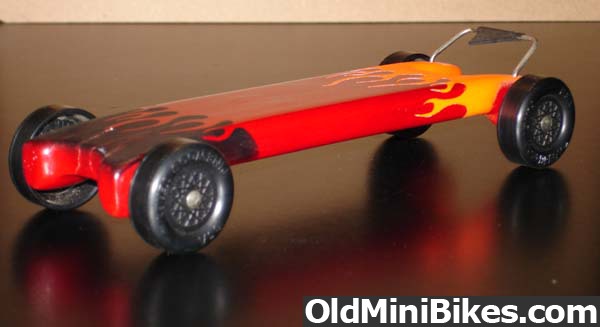I only made one car that was an extended wheelbase car. I never raced it, though.
Here it is:



The principle behind this design is to start the race a full inch ahead of the other cars. The starting peg rests in the insert and the bar up front flags the electronic timer as it passes over the finish line.
Is it cheating? It never was entered in a race so I'll never know. I chose to run the light blue car instead and I kept this car underwraps even though I had it with me for the divisional race.
This is where those pesky rules came into play. I wasn't allowed to test the car head to head with my light blue car to see which was fastest. The organizers said no one was allowed to use the tracks and only those cars entered would be handled by race officials during the race. Oh, well.
The light blue car had finished 1st place in the pack race earlier in the year but, wound up finishing second in the divisional to an extended wheelbased car.
I believe this one would've given that other extended wheelbase car some competition. What do you think?
Here it is:



The principle behind this design is to start the race a full inch ahead of the other cars. The starting peg rests in the insert and the bar up front flags the electronic timer as it passes over the finish line.
Is it cheating? It never was entered in a race so I'll never know. I chose to run the light blue car instead and I kept this car underwraps even though I had it with me for the divisional race.
This is where those pesky rules came into play. I wasn't allowed to test the car head to head with my light blue car to see which was fastest. The organizers said no one was allowed to use the tracks and only those cars entered would be handled by race officials during the race. Oh, well.
The light blue car had finished 1st place in the pack race earlier in the year but, wound up finishing second in the divisional to an extended wheelbased car.
I believe this one would've given that other extended wheelbase car some competition. What do you think?
Last edited:









